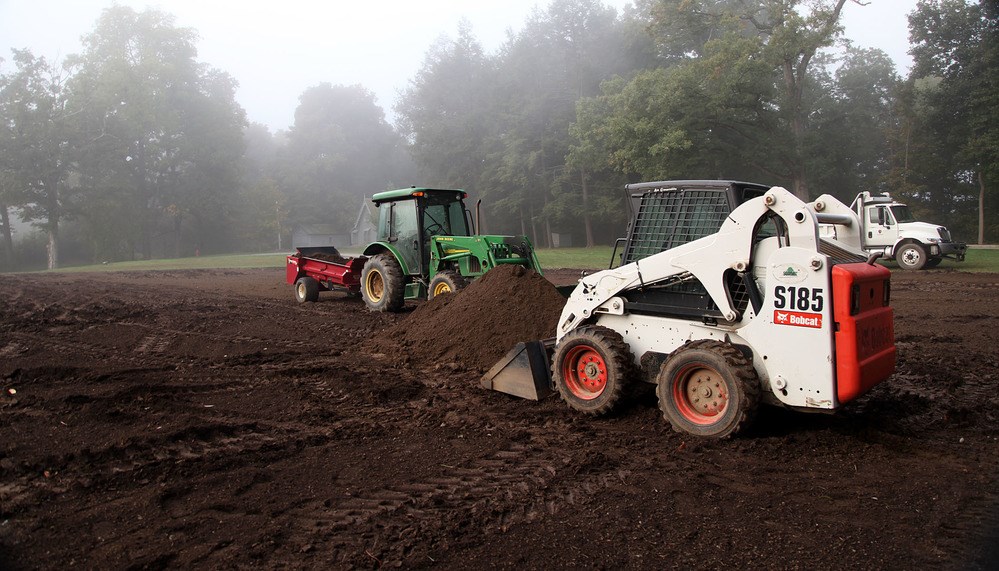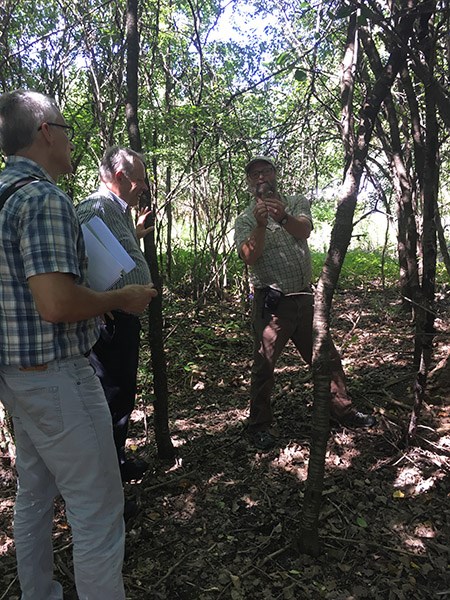"Historic preservation is not a profession or practice by itself—it is an aspect of all design and planning professions that deal with the environment."
Article
Preservation Profile: John Auwaerter
- Partner, NPS Olmsted Center for Landscape Preservation
- Co-Director, SUNY ESF Center for Cultural Landscape Preservation
- Visiting Instructor, Department of Landscape Architecture, SUNY College of Environmental Science and Forestry
Recently completed projects include:
- Cultural Landscape Report for Forts Baker, Barry and Cronkhite at Golden Gate National Recreation Area (2017),
- Cultural Landscape Report for Gettysburg National Cemetery (2017), and
- Cultural Landscape Report for Eleanor Roosevelt National Historic Site (2013).

Library of Congress, LC-B815-273
His professional interests include urban revitalization, historic preservation in design practice, advocacy and education, and the history of American architecture and landscapes.
In Conversation with John Auwaerter
John Auwaerter shares his early influences in landscape preservation, memorable projects, and thoughts for the future of historic preservation in this recent discussion with the Olmsted Center for Landscape Preservation:
What inspired your interest in cultural landscapes and their preservation?
What early academic or professional experiences were most formative for you?
JA: I was not really aware that historic preservation was an aspect of design and planning until I took a winter-term course at Middlebury College on documenting and evaluating the Federal-period house of the college’s founder, which had long been vacant. Our class did the initial work on a sort of historic structure report. That led me to a summer architecture discovery program at Columbia University, after which I considered graduate programs in architecture, landscape architecture, and historic preservation. I decided on Cornell’s planning program because I was under the wrong impression that most jobs in landscape architecture involved planning suburban development. My first job after Cornell was working as a building conservator for a preservation architect, Walter Sedovic, AIA.My awareness of how historic preservation could be applied to cultural landscapes came about during my five years at the New York State Historic Preservation Office between 1992 and 1997. As project review specialist for federal and state historic preservation laws, I saw the importance of addressing entire landscapes (whole places), not just individual buildings and structures. As a National Register program specialist, I learned about the importance of documenting and evaluating landscapes, not just buildings. After five years, though, I decided I wanted to do the research, inventory, and design work, not just review it, so I decided to go back to my earlier plan to earn a landscape architecture degree, and was attracted to SUNY ESF because of the work of George Curry.
What is the most rewarding project you’ve ever been involved with?
JA: Each project has its own rewarding aspect because this work always results in deeper understanding of place. I think seeing the plans we develop get implemented is certainly the most rewarding—such as reestablishing the domestic garden at the Home of FDR in Hyde Park, New York, or rehabilitation of long-neglected Poplar Grove National Cemetery in Petersburg, Virginia. It is also very rewarding to see students gain expertise in cultural landscape preservation through our project work.
NPS Photo, Home of Franklin D. Roosevelt National Historic Site
What is the most challenging project you’ve ever been involved with?
JA: The projects that involve big landscapes—2,700 acres at Forts Baker, Barry, and Cronkhite, or the 1,000 acres at the 1st Corps battlefield at Gettysburg National Military Park are good examples. The challenge is trying to find the correct level of detail at which to document the history, inventory landscape features, and provide treatment recommendations with the funding provided. People always want to know more about a place the more you dig into it.What advice would you give to aspiring landscape preservation professionals?

NPS Photo (September 2016)
JA: Historic preservation is not a profession or practice by itself—it is an aspect of all design and planning professions that deal with the environment. The biggest issue I see in historic preservation today is that it is not taught as a fundamental aspect of practice, whether applied to landscapes, buildings, archaeology, or ethnographic resources. All designers and planners should be equipped with the tools necessary to understand and conserve places before they propose new interventions.
We also need to integrate our approaches to managing natural and cultural resources—they are rarely separate in landscapes. We also need to address these things in primary and secondary education. Few schools teach kids to see, understand, and appreciate the cultural heritage of their communities reflected in buildings and landscapes.
What role do you see for historic preservation in society at large?
JA: We don’t need to look further than the Historic Preservation Act of 1966, in which Congress eloquently states the importance of heritage to the country. I’m hopeful that we are re-engaging this, especially as young people rediscover the value of historic urban places, from villages to cities, and place a high value on protecting the environment. A challenge is to make society see that historic preservation is integral to a holistic approach to sustainability that addresses both nature and culture.Last updated: February 7, 2018


